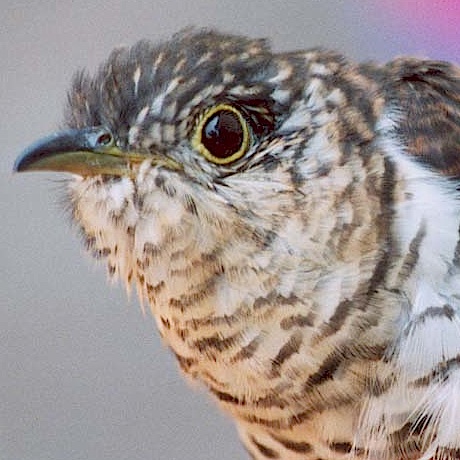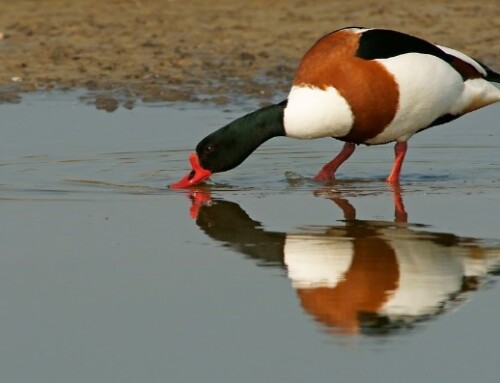 Genetic structure offers insights into the evolution of migration and the taxonomy of the Barred Long-tailed Cuckoo Cercococcyx montanus species complex
Genetic structure offers insights into the evolution of migration and the taxonomy of the Barred Long-tailed Cuckoo Cercococcyx montanus species complex
There are new species and then there are new species. In other words, there are species that are previously completely unknown and there are ‘new- species that come from researchers gathering data that argue that a previously described subspecies deserves to be considered a full species (commonly referred to as ‘splitting-). Splitting is often characterized as taxonomic rearrangements based on minor differences or application of one species concept as opposed to another. But this sentiment ignores the fact that in most cases, researchers are basing their recommendations on more and better data than was available previously. While our paper focuses on using genetic data to explore aspects of the evolution of migration that we can learn from these closely related cuckoos, we also present data that argue that the two subspecies of Barred Long-tailed Mountain Cuckoo should be elevated to Cercococcyx montanus of the Albertine Rift and Cercococcyx patulus of the east and southeast Africa based on genetic, morphological, geographic, and behavioral data.
Every new species has a story associated with its discoveryÔÇöeven those that result from splittingÔÇöand ours starts with the Programme Biodiversité des ├ëcosist├¿mes Aquatiques et Terrestres dans le Rift Albertin (PBEATRA) training program that was funded by the John D. and Catherine T. MacArthur Foundation. This program allowed staff of the Bird and Mammal Divisions of the Field Museum to interact and conduct training programs in concert with staff from research stations in the eastern Democratic Republic of Congo, a region struggling to recover from more than 20 years of civil unrest. The goal of the project was to build scientific capacity through training at extant Congolese research stations helping them to reconnect with the outside world.
The research station at the Centre de Recherche en Science Naturelle, Lwiro contains important regional scientific collections that the dedicated staff managed to maintain throughout the Congo wars. It was at Lwiro that Bates first saw a Barred Long-tailed Cuckoo specimen from that region that was labeled as C. m. patulus, the migratory subspecies, that breeds no closer than 800km from this locality. The bird had been collected on Idjwi Island in Lake Kivu. Subsequently, during a training program on Idjwi Island, the group encountered two more ‘wintering- patulus. Later, the group also collected the Albertine Rift resident, C. m. montanus during training in Kahuzi-Biega National Park. It was these specimens that spurred Bates’ interest in pursuing the research that led to this paper (Engels et al 2014).
The current paper, authored by Field Museum personnel and Congolese ornithologists from the station at Lwiro and from Université Officielle de Bukavu, is one result of this collaboration and capacity-building. It also highlights the international collaborations between major natural history museums in Europe and the U.S., which was essential to ensure sampling across the distributions of both species for both the genetic and morphologic analyses.
Finally, the paper is about two species for which there is still little natural history data beyond what is presented. Barred Long-tailed Cuckoos are certainly brood parasites, like most Old World cuckoos, but the birds they parasitize remain a mystery, with only anecdotal observations of possible parasitism of akalats (Sheppardia) and African Broadbill (Smithornis capensis) providing any evidence. Do the two taxa parasitize different hosts? We know that C. patulus migrates, but why does it migrate when C. montanus does not? And do different populations of C. patulus have different migratory routes? For example, there is a single record of C. patulus from the Congo BasinÔÇöis this a normal part of its non-breeding range? We are excited by the kinds of questions that develop out of this study recommending a simple ‘split.-
Reference
Engel, J.I, Byamana, K., Kahindo, C., Bates, J.M. and Fjeldså, J. 2014. Genetic structure offers insights into the evolution of migration and the taxonomy of the Barred Long-tailed Cuckoo Cercococcyx montanus species complex. IBIS. DOI: 10.1111/ibi.12145
View
Image: Cercococcyx (montanus) patulus © Jeff Hunt. This is the migratory subspecies captured on it’s non-breeding grounds on Idjwi Island (in Lake Kivu), Democratic Republic of Congo, July 2001
Blog with #theBOUblog
If you want to write about your research in #theBOUblog, then please see here.



